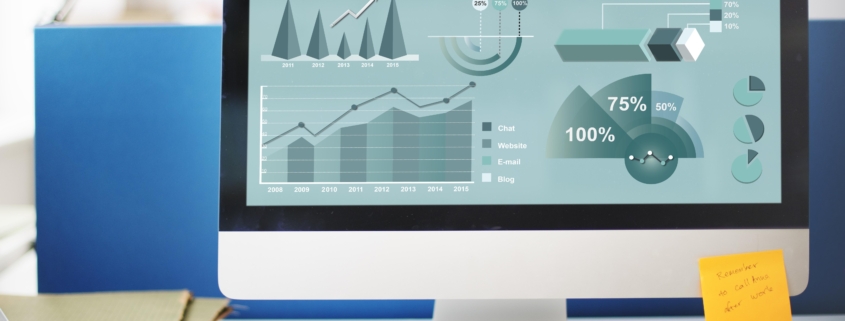Top 10 Big Data Analytics Tools Employers Want You to Know
If you’ve been thinking about a career in data analytics, you’re probably wondering which big data analytics tools you should learn. With so many choices, it can be tough to decide.
To focus your efforts, we’ve compiled the ten most popular big data analytics tools based on what most employers currently use and the biggest players in the data analytics space. That way, you can be confident about your marketability once you enter the workforce. Let’s take a look at each tool and its capabilities.
1. Amazon Elastic MapReduce (EMR)
Amazon is well known for its cloud-based web platform and has now expanded into the big data field. Based on the popular Hadoop framework, Amazon EMR customers can use open source tools such as Apache Spark, Apache Hive, Apache HBase, Apache Flink, and Presto. Companies across many industries use EMR to handle broad sets of big data, including machine learning, data transformations, financial and scientific simulation, bioinformatics, log analysis, and deep learning.
2. Oracle Analytics
Oracle Analytics empowers business analysts and consumers with modern, AI-powered, self-service analytics capabilities for data preparation, visualization, enterprise reporting, augmented analysis, and natural language processing/generation. In addition, both on-premise and cloud business users can use business scenario modeling and what-if analysis, test assumptions, and generate easy-to-understand visualizations through Oracle’s Essbase.
3. Google BigQuery
Known for its innovation, Google has been expanding in the field of big data analytics. Google’s BigQuery is a cloud-based platform for data scientists to analyze huge data sets quickly. They also have Cloud Data Flow, Cloud Dataproc, and Cloud Datalab, which offers expanded functionalities such as batch computation, stream analytics, and data visualization.
4. IBM Cognos Analytics
IBM is one of the most prominent big data vendors in the world. Although they offer many big data analytics tools, we’ll focus on IBM Cognos Analytics. This platform integrates reporting, modeling, analysis, dashboards, stories, and event management so that you can understand your organization’s data and make effective business decisions. There are numerous features and functions depending on whether you’re an analyst, report author, data modeler, or administrator.

Find out which programming language would be most helpful to know in conjunction with the data analytics tool. Python, SQL, and R are the most popular programming languages.
5. SAS
SAS (which previously stood for Statistical Analysis System) is a statistical software suite developed by SAS Institute for advanced analytics, multivariate analysis, business intelligence, criminal investigation, data management, and predictive analytics. Its suite of products offers data mining, statistical analysis, forecasting, text analytics, optimization, and simulation. With SAS software now installed at more than 80,000 business, government and university sites, having a good understanding of this platform can give you an edge when job hunting.
6. HP Enterprise Vertica Analytics Platform
HP Enterprise has established itself in the big data field with a robust big data product portfolio. Its main product, Vertica Analytics Platform, provides fast performance in SQL Analytics and Hadoop while working on huge structured datasets. Another big data solution is IDOL. This provides a shared environment for all kinds of data with visualization, intelligence, and exploration.
7. RapidMiner
RapidMiner has received multiple industry awards and is now being used in 30,000 organizations across the world. It’s a fully transparent, end-to-end data science platform that offers data prep, machine learning, and model operations. Plus, RapidMiner can integrate with any data source types, including Access, Excel, Microsoft SQL, Tera data, Oracle, Sybase, IBM DB2, Ingres, MySQL, IBM SPSS, Dbase, and others.
8. Tableau
Tableau is a powerful analytics platform and visualization tool that’s easy to use, and growing in popularity. It offers visual data discovery, and also connects to big data, an SQL database, or cloud apps like Google Analytics and Salesforce. Its server allows central management of metadata and security rules. Plus, since it’s fully hosted in the cloud, organizations can avoid configuring servers, managing software upgrades, and scaling hardware capacity.
9. R
R is both a programming language and a computing environment. It’s one of the leading open-source analytics tools in the industry, in part because it was designed to easily add new functions. Most commonly used for statistics and data modeling, R can easily manipulate your data and present it in different ways. It can also run on a wide variety of platforms viz -UNIX, Windows, and MacOS.

Data visualization involves producing images that communicate relationships among the represented data. Big data analytics tools like Tableau have become more popular in part due to their expansive data visualization options.
10. Qlik Sense
Qlik offers a wide choice of BI and analytics tools under its flagship offering, Qlik Sense. This solution allows organizations to combine all their data sources into a single view. The in-memory engine and associative analytics indexes every possible data relationship. Plus, the platform is available on-premises or in the cloud. They also offer the Qlik Analytics Platform (embedded and custom tools), and Qlik View, the company’s first-generation data discovery tool.
—
And one last bonus tool is Microsoft Excel. Surprised? It’s one of the most popular and underrated data analytics and visualization tools in the market. Excel also has the advance business analytics option which helps in modeling capabilities with prebuilt options like automatic relationship detection, creation of DAX measures, and time grouping. This is an easy and accessible program to practice your skills.
When prioritizing your studies, it’s important to understand what programming languages, frameworks, and tools are commonly used in the setting where you’d like to work. However, if you haven’t decided which data analytics role you’d like to pursue, having a basic, working knowledge of all these popular tools will help you decide on your specialty and give you an edge in the job market.
If you’d like to join this exciting field with a BS in Computer Science or an MS in Big Data Analytics from St. Thomas University, please contact our admissions team today.

